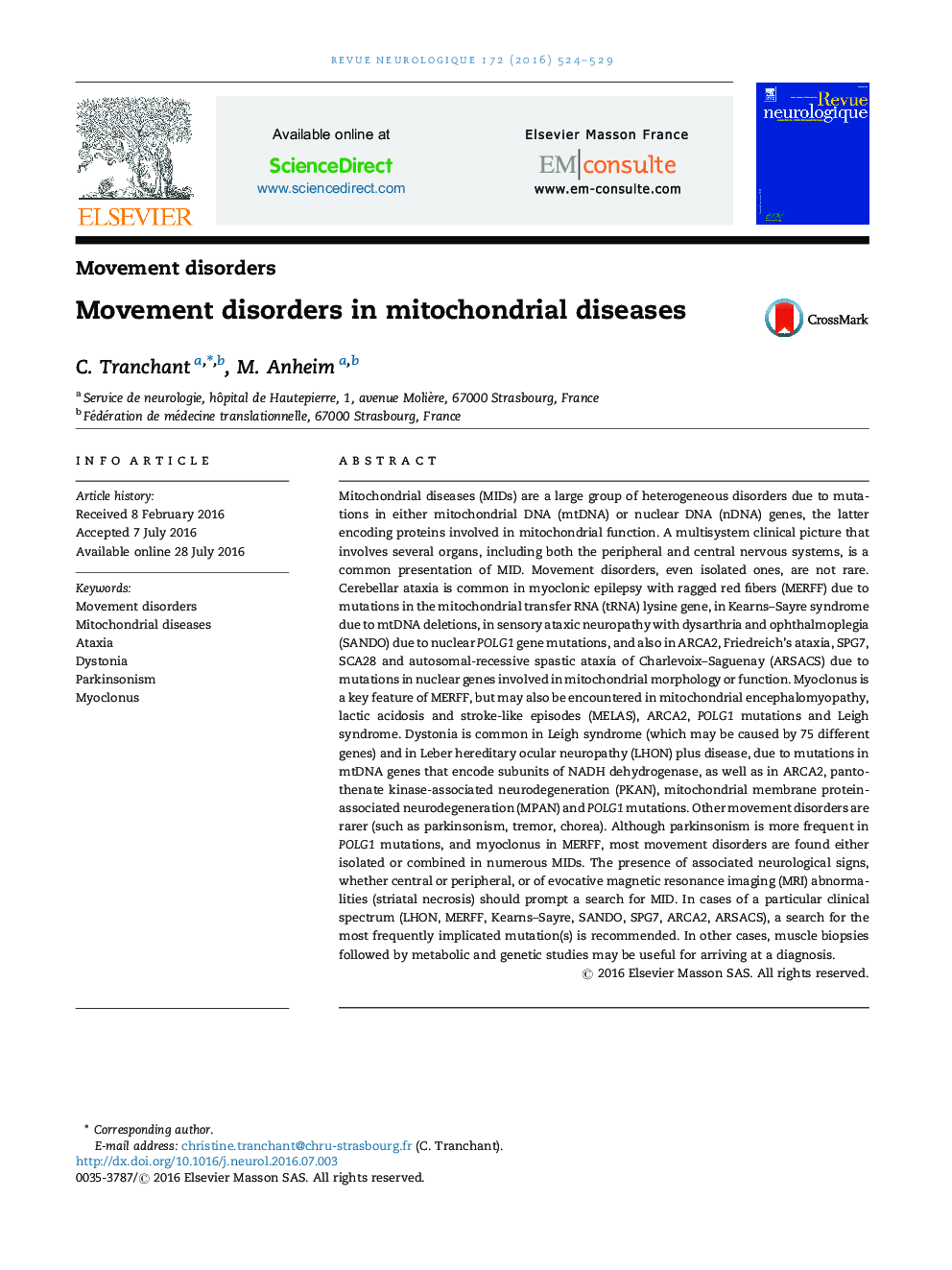| کد مقاله | کد نشریه | سال انتشار | مقاله انگلیسی | نسخه تمام متن |
|---|---|---|---|---|
| 5633439 | 1581308 | 2016 | 6 صفحه PDF | دانلود رایگان |
Mitochondrial diseases (MIDs) are a large group of heterogeneous disorders due to mutations in either mitochondrial DNA (mtDNA) or nuclear DNA (nDNA) genes, the latter encoding proteins involved in mitochondrial function. A multisystem clinical picture that involves several organs, including both the peripheral and central nervous systems, is a common presentation of MID. Movement disorders, even isolated ones, are not rare. Cerebellar ataxia is common in myoclonic epilepsy with ragged red fibers (MERFF) due to mutations in the mitochondrial transfer RNA (tRNA) lysine gene, in Kearns-Sayre syndrome due to mtDNA deletions, in sensory ataxic neuropathy with dysarthria and ophthalmoplegia (SANDO) due to nuclear POLG1 gene mutations, and also in ARCA2, Friedreich's ataxia, SPG7, SCA28 and autosomal-recessive spastic ataxia of Charlevoix-Saguenay (ARSACS) due to mutations in nuclear genes involved in mitochondrial morphology or function. Myoclonus is a key feature of MERFF, but may also be encountered in mitochondrial encephalomyopathy, lactic acidosis and stroke-like episodes (MELAS), ARCA2, POLG1 mutations and Leigh syndrome. Dystonia is common in Leigh syndrome (which may be caused by 75 different genes) and in Leber hereditary ocular neuropathy (LHON) plus disease, due to mutations in mtDNA genes that encode subunits of NADH dehydrogenase, as well as in ARCA2, pantothenate kinase-associated neurodegeneration (PKAN), mitochondrial membrane protein-associated neurodegeneration (MPAN) and POLG1 mutations. Other movement disorders are rarer (such as parkinsonism, tremor, chorea). Although parkinsonism is more frequent in POLG1 mutations, and myoclonus in MERFF, most movement disorders are found either isolated or combined in numerous MIDs. The presence of associated neurological signs, whether central or peripheral, or of evocative magnetic resonance imaging (MRI) abnormalities (striatal necrosis) should prompt a search for MID. In cases of a particular clinical spectrum (LHON, MERFF, Kearns-Sayre, SANDO, SPG7, ARCA2, ARSACS), a search for the most frequently implicated mutation(s) is recommended. In other cases, muscle biopsies followed by metabolic and genetic studies may be useful for arriving at a diagnosis.
Journal: Revue Neurologique - Volume 172, Issues 8â9, AugustâSeptember 2016, Pages 524-529
